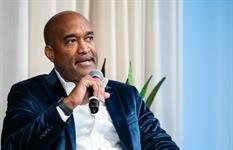It was another tough quarter for Omnicom’s PR firms as they posted a near 8% drop in organic revenue compared to the same period in 2024.
Omnicom CFO Philip Angelastro explained that $25 million, or 80% of the decline in PR revenue resulted from there not being a U.S. election this year. The majority of the remaining reduction came out of the U.K. business.
Angelastro expects similar declines for OPRG in Q4, again because of the tough comparisons with an election year.
It’s true that Omnicom tends to perform better in U.S. election years, through subsidiaries such as FleishmanHillard’s political communications and media buying shop GMMB, FP1 Strategies and Plus Communications, although the latter two were only acquired in 2023.
It’s difficult to make full like-for-like comparisons with previous post-election years, due to factors such as COVID-19. In 2021, the year after Joe Biden was elected president, OPRG’s organic year-over-year numbers were up considerably: 15.1% in Q2, 10.3% in Q3 and 4.4% in Q4. But that was very much to do with the industry reawakening after the main year of the pandemic.
In 2017, the year after President Trump was elected president, OPRG revenues were down 0.3% in Q2, 0.4% in Q3 and up 7.7% in Q4. Q2 was the quarter when Omnicom CEO John Wren famously told analysts that his PR firms needed more hunters and fewer farmers, and in OPRG CEO Chris Foster – appointed in June 2021 – the group definitely acquired one of those.
Since he began his tenure, Foster has changed the CEOs at numerous firms in the group, including FleishmanHillard, Ketchum, Porter Novelli and MMC. But the thrill of the hunt has yet to be fully realised.
In 2013, the year after President Obama was reelected for his second term as president, OPRG was up 1.9% year over year in Q2, up 4.6% in Q3, and down 3.7% in Q4.
So the narrative that PR revenues are always considerably down at OPRG in post-election years is not a hard and fast trend, though there are some mitigating historical factors involved. PR accounted for 9.3% of Omnicom’s overall Q3 revenue but, by any token, drops of 9.3% and 7.5% in the last two quarters will not be delighting the CEO and bean counters at the holding company.
Overall, Omnicom posted global organic year-over-year revenue growth of 2.6%, which rose to 4.6% in the U.S. This performance was mainly driven by strong performance in the media and advertising segment of the holding company’s business, which comprised 58.3% of Q3 revenues and was up 9.1% organically.
Creative continued to be impacted by lower levels of project work due to macroeconomic uncertainty. The sooner Omnicom’s acquisition of Interpublic Group, now awaiting regulators in just one remaining territory – the European Union – the better for all concerned. The holdco estimates it will all be done by the end of November.
Wren told analysts: “Our dedicated integration teams at both Omnicom and IPG have been working tirelessly to ensure we’re ready to hit the ground running on day one. We’ve made significant progress developing detailed plans to deliver a seamless transition for our teams and clients.
“Our integration team has also made progress as we prepare to launch OmniPlus, our next generation marketing operating system. This system unifies unparalleled data assets spanning campaign performance, consumer behaviors, demographic insights, transaction intelligence, and cultural and social indicators.”
Omnicom plans to launch this tool at the CES tech trade show in Las Vegas in early January, underpinned by Axiom Real ID and a generative AI layer.
Wren suggested plans for the post-acquisition organization structure and leadership team, strategic priorities, and expanded capabilities, services and products will become clear soon after the close of the transaction. This is, of course, the piece most participants and observers are speculating furiously about.
He noted that Omnicom had won clients including American Express, Porsche, Intersnack, White Castle and OpenAI. IPG won Amgem, Bayer Anthropic and Paramount.
The newly combined Omnicom/Interpublic Group will have to make $750 million in savings per year, an ambitious target but one it is even considering increasing. The rationalization work, headlined by staff cuts, has already begun.
In Q3, operating expenses included $38.6 million ($28.4 million after-tax) of repositioning costs, primarily related to severance actions as Omnicom prepares to integrate IPG. For the nine months ended September 30, 2025, operating expenses include $127.4 million ($95.7 million after-tax) of repositioning costs, as well as efficiency initiatives in the second quarter of 2025, primarily within the Omnicom Advertising Group and the Omnicom Production Group.
The analysts had various reactions to Omnicom’s Q3 numbers, though they rarely get into the weeds of the PR oart of the business.
“In line and no change to guidance” was UBS’ verdict. “Omnicom: All dressed up with one place to go,” said MoffattNathanson, suggesting it could quite easily prosper if it stayed as a single entity. It has concerns over growth in net revenues post-acquisition and the accompanying repositioning and severance costs. It sees the IPG acquisition as a “shotgun marriage” aimed at cost savings and increased media scale.
CES will be a big milestone in stating what the combined Omnicom/IPG business will look like. And chief PR hunter Chris Foster will be hoping the OPRG segment numbers have shifted in a positive direction by the time Q1 2026 reporting comes around.















